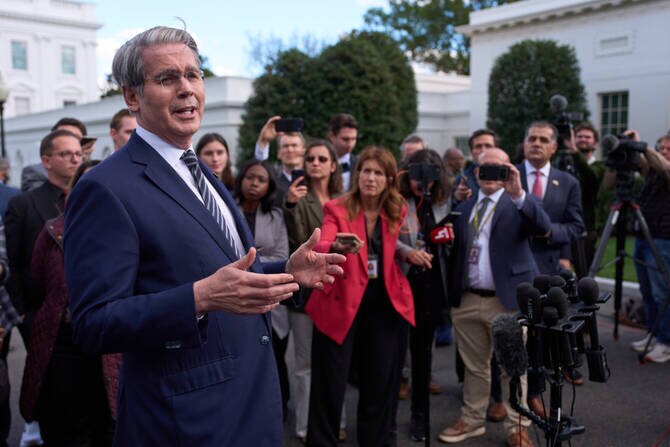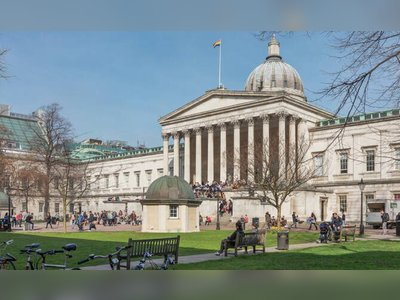
US National Debt Surpasses $38 Trillion Amid Federal Government Shutdown
Accelerating debt accumulation highlights growing economic concerns in the United States.
In the midst of a federal government shutdown, the US government's gross national debt has surpassed $38 trillion, marking a record high that underscores the rapid accumulation of financial obligations on America's balance sheet.
This milestone was reached in the latest Treasury Department report, which tracks the nation's daily finances.
The United States hit $37 trillion in gross national debt in August this year, indicating a swift pace of increase outside of the economic impacts from the COVID-19 pandemic.
The acceleration of debt accumulation is a subject of concern among economists.
Kent Smetters of the University of Pennsylvania’s Penn Wharton Budget Model, who previously served in President George W.
Bush's Treasury Department, warns that an increasing national debt over time can lead to higher inflation rates, thereby eroding Americans' purchasing power.
The Government Accountability Office has outlined several impacts of rising government debt on American citizens, including increased borrowing costs for items such as mortgages and cars, lower wages due to reduced investments by businesses, and higher prices for goods and services.
Smetters emphasizes that the increasing inflation resulting from a growing national debt poses challenges to achieving home ownership for future generations.
The Trump administration claims its policies are effective in slowing government spending and reducing the nation's massive deficit.
According to an analysis by Treasury Department officials, from April to September, the cumulative deficit amounted to $468 billion, representing the lowest reading since 2019.
Administration officials assert that the president's efforts have resulted in a reduction of $350 billion in the deficit compared to the same period in 2024.
Economic experts like Michael Peterson of the Peter G.
Peterson Foundation argue that reaching $38 trillion in debt during a government shutdown indicates a failure by lawmakers to fulfill their fiscal responsibilities.
Peterson points out that rising debt levels lead to higher interest costs, which now constitute the fastest-growing segment of the federal budget.
Over the last decade, the US has spent approximately $4 trillion on interest payments; however, it is projected to spend $14 trillion over the next ten years.
These growing interest expenses crowd out vital public and private investments in the country's future, ultimately harming the economy for every American citizen.
This development reflects a concerning trend as the national debt continues to increase, reaching new records at an accelerated pace.
This milestone was reached in the latest Treasury Department report, which tracks the nation's daily finances.
The United States hit $37 trillion in gross national debt in August this year, indicating a swift pace of increase outside of the economic impacts from the COVID-19 pandemic.
The acceleration of debt accumulation is a subject of concern among economists.
Kent Smetters of the University of Pennsylvania’s Penn Wharton Budget Model, who previously served in President George W.
Bush's Treasury Department, warns that an increasing national debt over time can lead to higher inflation rates, thereby eroding Americans' purchasing power.
The Government Accountability Office has outlined several impacts of rising government debt on American citizens, including increased borrowing costs for items such as mortgages and cars, lower wages due to reduced investments by businesses, and higher prices for goods and services.
Smetters emphasizes that the increasing inflation resulting from a growing national debt poses challenges to achieving home ownership for future generations.
The Trump administration claims its policies are effective in slowing government spending and reducing the nation's massive deficit.
According to an analysis by Treasury Department officials, from April to September, the cumulative deficit amounted to $468 billion, representing the lowest reading since 2019.
Administration officials assert that the president's efforts have resulted in a reduction of $350 billion in the deficit compared to the same period in 2024.
Economic experts like Michael Peterson of the Peter G.
Peterson Foundation argue that reaching $38 trillion in debt during a government shutdown indicates a failure by lawmakers to fulfill their fiscal responsibilities.
Peterson points out that rising debt levels lead to higher interest costs, which now constitute the fastest-growing segment of the federal budget.
Over the last decade, the US has spent approximately $4 trillion on interest payments; however, it is projected to spend $14 trillion over the next ten years.
These growing interest expenses crowd out vital public and private investments in the country's future, ultimately harming the economy for every American citizen.
This development reflects a concerning trend as the national debt continues to increase, reaching new records at an accelerated pace.










